When we see the words gluten-free, allergen-free or dairy-free on the shelf, in many cases, our mind goes to the preventative—the idea that these foods are here to accommodate for health needs. On paper, this may still be the case, but in reality, that frame of mind is outdated, and we need only to look to the numbers to prove it.
Findings from National Marketing Institute’s 2015 Gluten-Free Report suggests that while gluten-free products had penetrated 49% of households in 2014, only 6% said they did so because of celiac disease. Instead, the most common reason was “overall health,” with many giving gluten-free a try based off of recommendations from friends and family (1). This idea of foods for sensitive diets becoming a 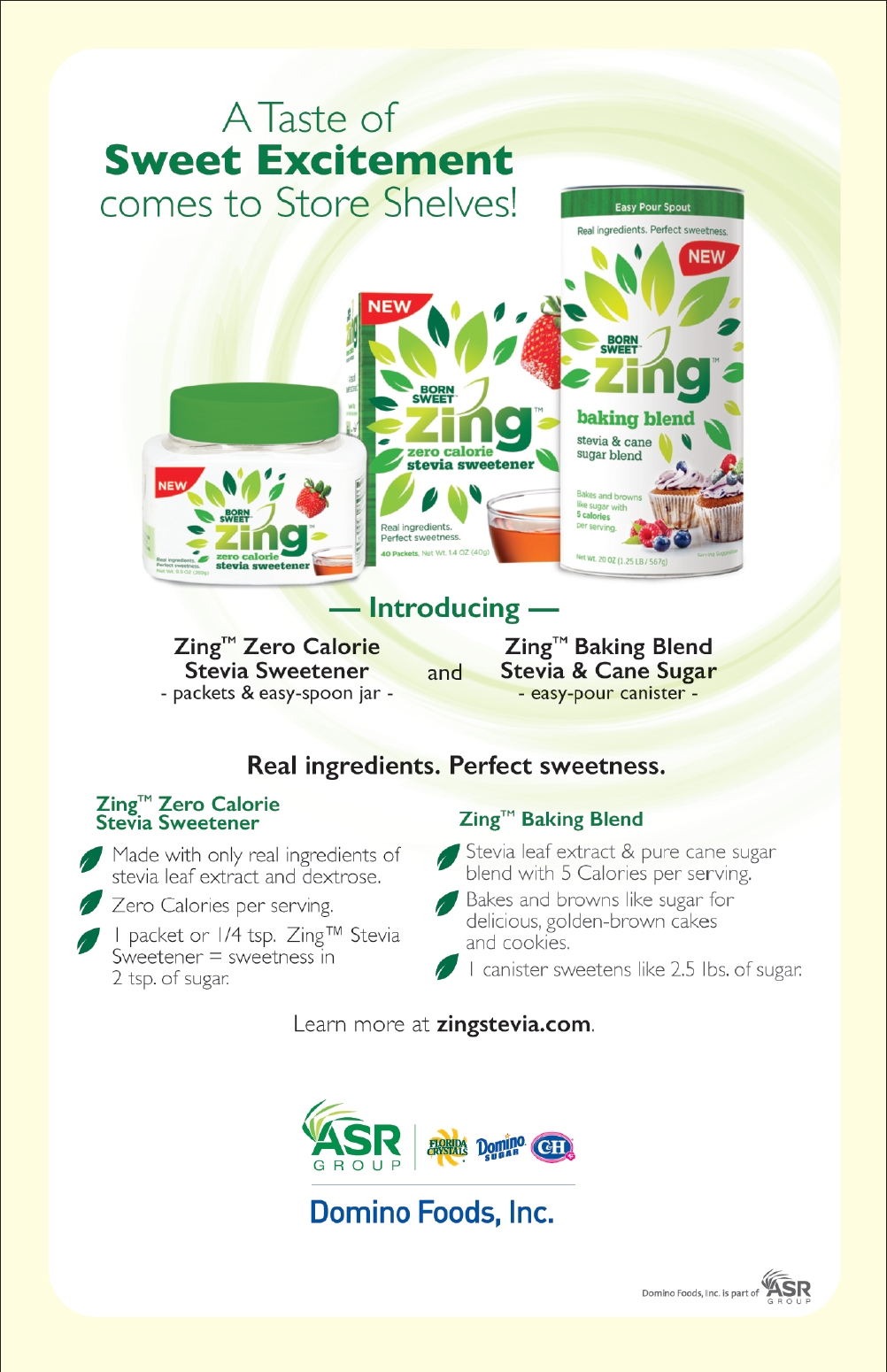 gateway to overall health mirrors what we see in the entire natural products industry.
gateway to overall health mirrors what we see in the entire natural products industry.
With this success comes some questions, though. Does this explosive trend have any room left to grow? And, what of the controversial sentiment held by some critics that sensitive diet foods aren’t optimally healthy for those without any food sensitivities?
Free-From: Then and Now
Perhaps the most prevalent demonstration of the “rebranding” of sorts that the sensitive diets category is undergoing is in a new name that is being passed around. The idea of a “free-from” category isn’t what’s new, points out David Wilson, board advisor at Quorn Foods, Stokesley, UK. Having been an established category in the United Kingdom for over 10 years, the original purpose of “free-from” as a category was to serve as “an easy way for those with dietary restrictions to access products.”
Anne Roland Lee, Ed.D., RDN, LD, director of nutritional services at Dr. Schar USA, Lyndhurst, NJ, adds that in its original form, “the uniform language takes the guess work out of labels…to me the terminology is positive and empowering instead of creating the feeling of deprivation.”
While many of the principles that shaped the UK definition of the free-from category still hold true, its introduction abroad has also taken on some principles of its own. Joel Warady, chief sales and marketing officer at Enjoy Life Foods, Schiller Park, IL, says that his company was one of the first American companies to introduce the term into the marketplace, but “redefined it to mean gluten-free plus free of multiple allergens.” In his company’s specific case, this means none of the top eight allergens: “wheat, 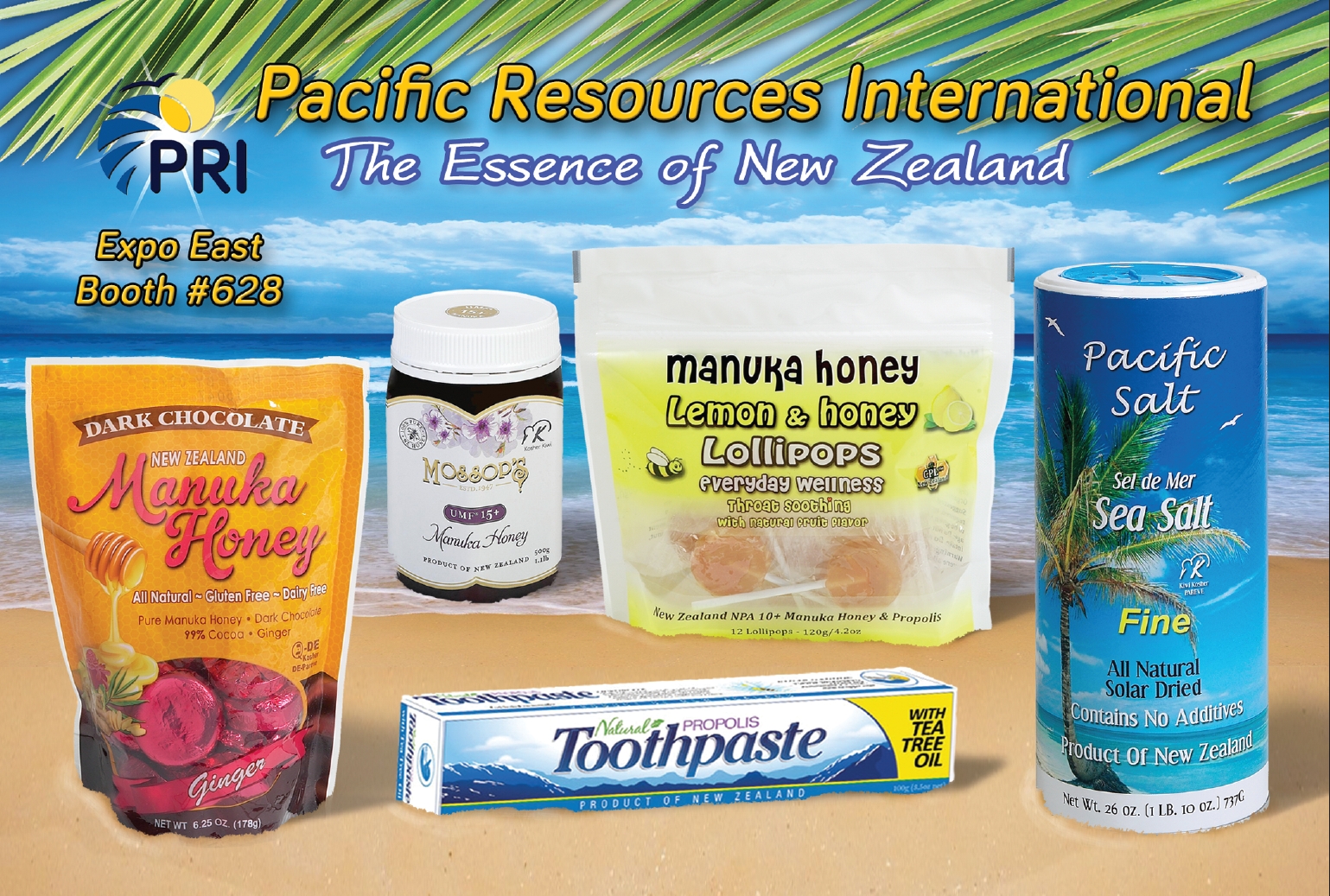 dairy, peanuts, tree nuts, egg, soy, fish and shellfish.”
dairy, peanuts, tree nuts, egg, soy, fish and shellfish.”
He notes that there is a bit of confusion with the free-from name, though, as while it is primarily targeted toward the removal of certain allergens, some retailers “are using it to designate products that are free-from certain ingredients, not necessarily allergens. We believe that this will continue to confuse the consumer who is looking for products that meet the needs of their special diets.” So, while free-from is certainly a part of the sensitive diets category, not all sensitive diet foods match the free-from designation. It will be interesting to see as the “free-from” category grows whether we see a further evolution of the term to encompass this or a push back to keep it to its original purpose.
It would be remiss to discuss how the free-from category was created for the purpose of communicating to consumers without explaining why said communication is so important. Dave Rosenberg, food category manager for NOW Foods, Living Now and Ellyndale Foods, Bloomingdale, IL, says that as consumers demand foods that are minimally processed without artificial ingredients, they want to see ingredients they recognize along with prominent indicators of various categories like organic or non-GMO. Free-from plays to this need by serving as a “clarification and simplification of what previously was a difficult quest,” he says.
Craving With Care
 While expanded interest equals bigger sales, it also equals bigger expectations. Daphne Taylor, founder and CEO of Namaste Foods, Coeur d’Alene, ID, points out that the consumer mindset is very much a case of “we want it all. We want the perfect taste and texture AND want it to be as healthy as possible.” This is particularly a challenge in sensitive food categories like dairy-free, salt-free or sugar-free, where there are certain concrete taste and texture markers that consumers are asking for. But, experts are hard at work finding effective substitutes in their ingredients while still maintaining sensitive diet-friendly status.
While expanded interest equals bigger sales, it also equals bigger expectations. Daphne Taylor, founder and CEO of Namaste Foods, Coeur d’Alene, ID, points out that the consumer mindset is very much a case of “we want it all. We want the perfect taste and texture AND want it to be as healthy as possible.” This is particularly a challenge in sensitive food categories like dairy-free, salt-free or sugar-free, where there are certain concrete taste and texture markers that consumers are asking for. But, experts are hard at work finding effective substitutes in their ingredients while still maintaining sensitive diet-friendly status.
Jill Motew, president and founder of Zemas Madhouse Foods, Highland Park, IL, says that cocoa powder, cinnamon, nutmeg and ginger are ingredients she turns to for flavors over artificial options, emphasizing “familiar smells, textures and eating experiences.”
Jill Robbins, founder and president of HomeFree, LLC, Windham, NH, adds that her company’s gluten-free cookies use whole oat flour instead of the rice that is sometimes used in gluten-free baking. This is combined with ingredients like dark chocolate and fruit juices to provide a product that meets the necessary parameters set for the category, while still delivering the familiar sensations that resonate with customers’ palates.
Sometimes, looking even further beyond the typical realm of ingredients to items from nature can open up new replacement possibilities. On the sweetener side of things, Roland Lee recommends looking to honey and agave to add “that sweet fix without the high glycemic load.” She adds that many companies are now turning to herbs and spices to try to impart the salty and savory flavors that many recent converts to sensitive diet foods are used to. Jim Adams and Brad Holley, co-founders of Qrunch Foods, Denver, CO, had to turn to some of these unique options in the creation of a quinoa-based burger. Without fat, soy or salt, as well as the “distinctive nutty taste of quinoa,” they turned to ingredients like millet, apple cider vinegar and organic vegetables including broccoli, garlic and spinach to impart flavor and a crunchy texture.
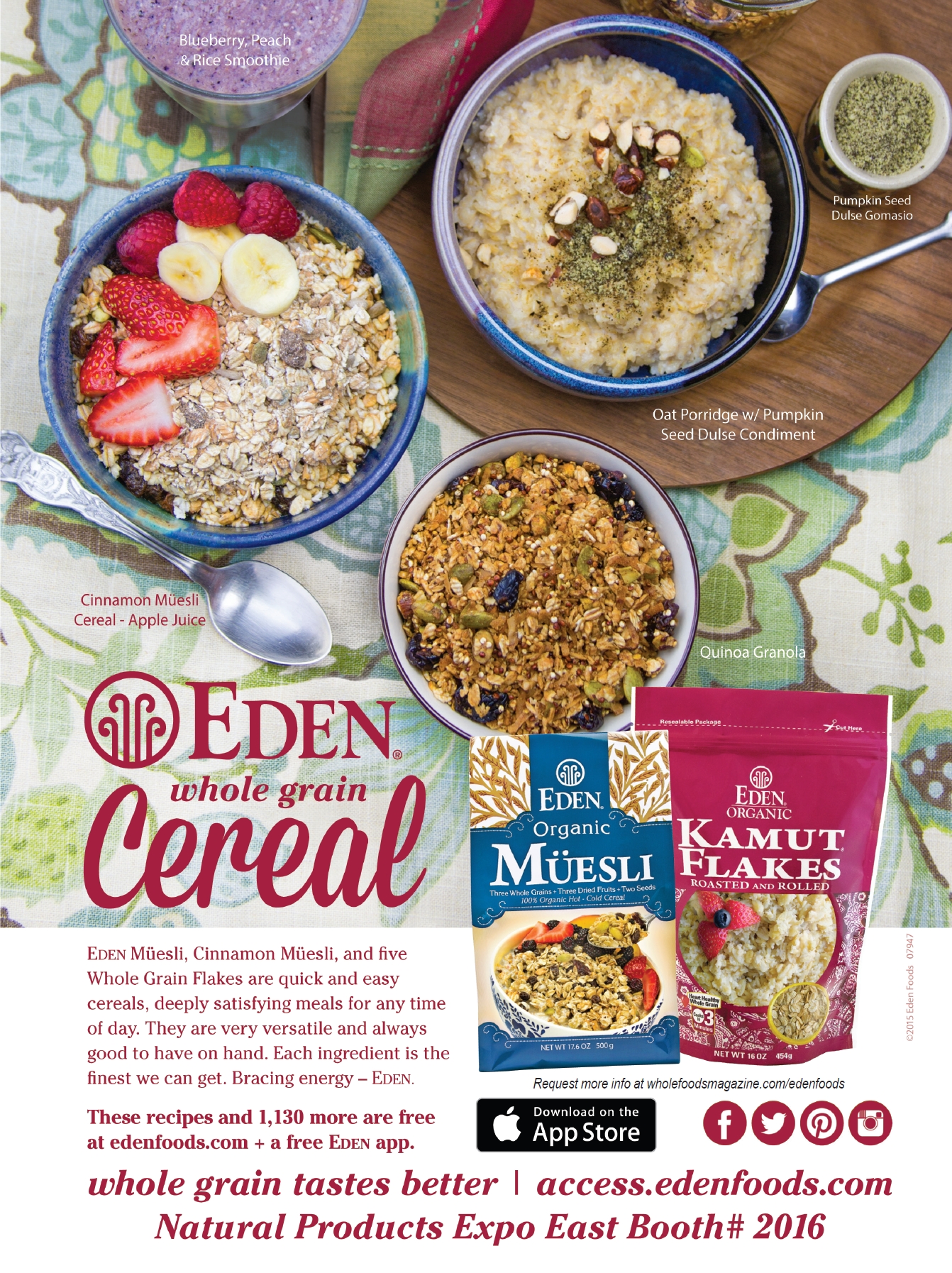 Ancient grains in particular are a category that is seeing heavy usage in the sensitive diets arena due to the absence of certain ingredients like gluten as well as the presence of heavy amounts of nutrients. Nicole Rees, business development manager—flax at Glanbia Nutritionals, Fitchburg, WI, notes that flaxseed “is very well known for its nutritional components including omega-3 ALA, protein, fiber, antioxidants and lignans.” Her company also offers a flax-based ingredient for gluten-free products designed to “overcome the traditional challenges of gluten-free applications,” such as retaining moisture and structural integrity.
Ancient grains in particular are a category that is seeing heavy usage in the sensitive diets arena due to the absence of certain ingredients like gluten as well as the presence of heavy amounts of nutrients. Nicole Rees, business development manager—flax at Glanbia Nutritionals, Fitchburg, WI, notes that flaxseed “is very well known for its nutritional components including omega-3 ALA, protein, fiber, antioxidants and lignans.” Her company also offers a flax-based ingredient for gluten-free products designed to “overcome the traditional challenges of gluten-free applications,” such as retaining moisture and structural integrity.
Another ancient grain that free-from devotees are flocking to is sorghum. Kathleen Apaid, co-founder of Nature2kitchen, Miami, FL, says that the crop “offers consumers a great gluten-free choice to incorporate in their diet as well as fiber, protein and iron as the main attributes.” She adds that the sponge-like consistency of the grain makes for a very versatile meal option that can serve as a healthier alternative to rice. Tim Lust, CEO of The Sorghum Checkoff, Lubbock, TX, expands the list of nutrients found in sorghum with niacin, potassium, magnesium and phosphorus, calling it “truly a grain where health and hunger are both satisfied.”
Wilson’s company uses a very unique meat replacement option that he believes will become even morepopular soon. Mycoprotein, a fungus with a meat-like consistency, is the basis for many of the company’s products. Being high in fiber and protein, Wilson believes mycoprotein could be a very appealing option “for people who don’t want to eat meat but are also avoiding soy products.” The fact that it can be frozen adds a layer of convenience as well.
When it comes to seeking out alternative ingredients, some sensitive diet categories have it better than others. Dairy alternative beverages have reached total sales of $24 billion in 2014, according to a report from Packaged Facts, prima
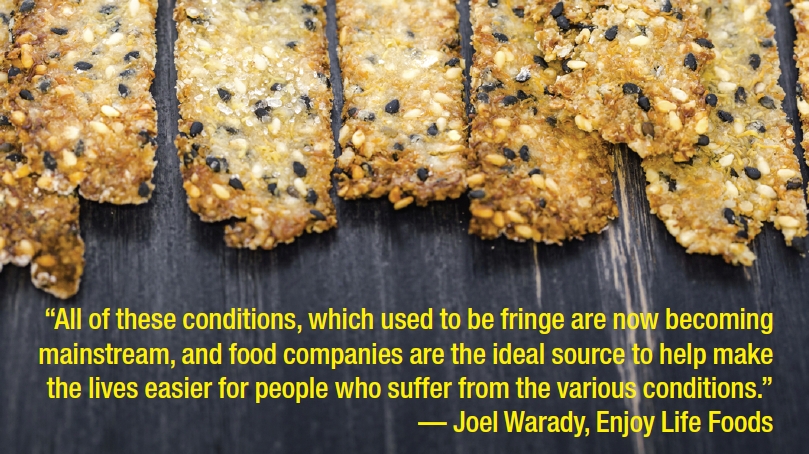
rily driven by the explosive popularity of almond milk, though other alternative milks showed sales increases as well (2). This popularity has also transferred to dairy-free foods to a degree, and companies have several innovative ways to satisfy a consumer who may want dairy out of their diet but isn’t quite ready to part with some of what comes with it. Leslie Kaplan and Carolyn Shulevitz, co-founders of The Piping Gourmets, Miami, FL, say that “dairy is becoming easier and easier to substitute,” mentioning coconut milk and rice beverages along with almond milk as items that can “mimic the taste and texture that milk can provide in any given recipe.”
Dairy byproducts, such as cheese, also have substitutes available from cashews and tree nuts. Michael Lynch, vice president of marketing at Daiya Foods, Vancouver, Canada, says that his company uses a blend of tapioca, pea protein and vegetable oils, such as coconut oil, to create a cheese substitute that can “melt, taste and stretch like dairy-based cheese products.” He adds that this kind of 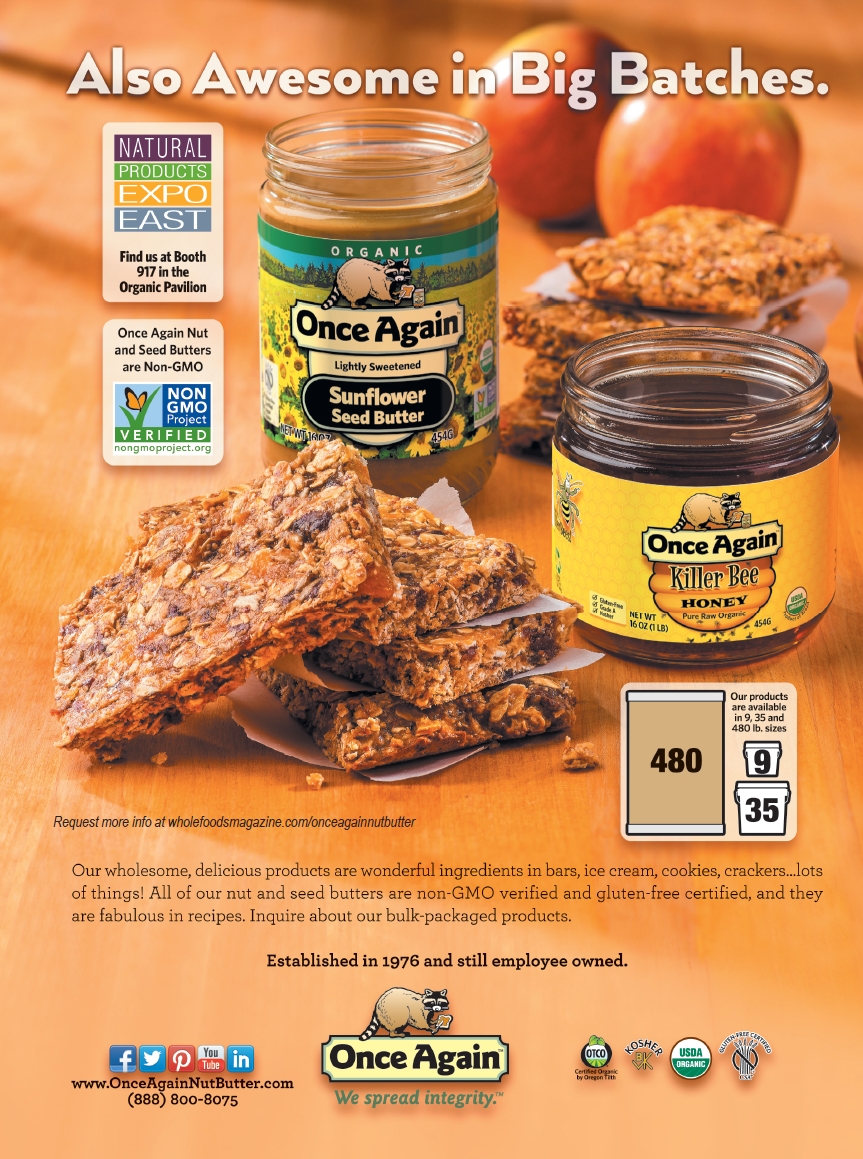 similarity allows families to make the same kind of meals they are used to without making separate dishes, whether sensitivities factor into the equation or not.
similarity allows families to make the same kind of meals they are used to without making separate dishes, whether sensitivities factor into the equation or not.
Passing or Permanent?
In addition to challenges on the formulation side of things, the rise of the sensitive diets category has brought in others as well. While many people without food sensitivities believe that the category can still improve their overall health, some critics believe the opposite is true: that sensitive diet foods are not necessarily as healthy for those without sensitivities due to the absence of certain ingredients and nutrients. Rosenberg brings things back to the early days of gluten-free foods and specialty foods in general, where there were products on the market “that made up for missing ingredients by adding a lot of sugar, fat or salt. Many of today’s products are more carefully created using better ingredients and then use consumer feedback to develop superior tasting products.”
Joshua Deschenes, national account director of Nu Life Market, Scott City, KS, mentions that “research has even shown many strict gluten-free dieters are suffering from malnutrition due to the increase of white rice flour/starch and a lack of vitamins and minerals.” It’s very important for people making the transition to free-from, he says, to consider quality, and avoid free-from processed foods.
Fortification with nutrients is one way to counteract this. Kimberlee Ullner, founder and president of 1-2-3 Gluten Free, Inc., Chagrin Falls, OH, says that her company added nutrients like iron, B vitamins and calcium specifically because they “are often lacking in someone maintaining a gluten-free lifestyle.” Warady says that this can be taken to the next level with his company adding protein as well as probiotics to support digestive health.

In some cases, free-from diets can have some benefits even for those without sensitivities. Adams and Holley explain that “the argument that restrictive diets are ‘extreme’ is a misconception. The average American can benefit from a free-from diet with a subtle shift.” Due to the influx of companies seeking out the healthiest ingredients possible for their free-from foods, consumers can also benefit indirectly, eating more “healthier-for you” ingredients that may not be on their radar, they add. Kaplan and Shulevitz add that as a result of both direct and indirect nutrition through these foods, free-from consumers “have reported clearer skin, easier digestion and there is less exposure to harmful hormones, pesticides and antibiotics.”
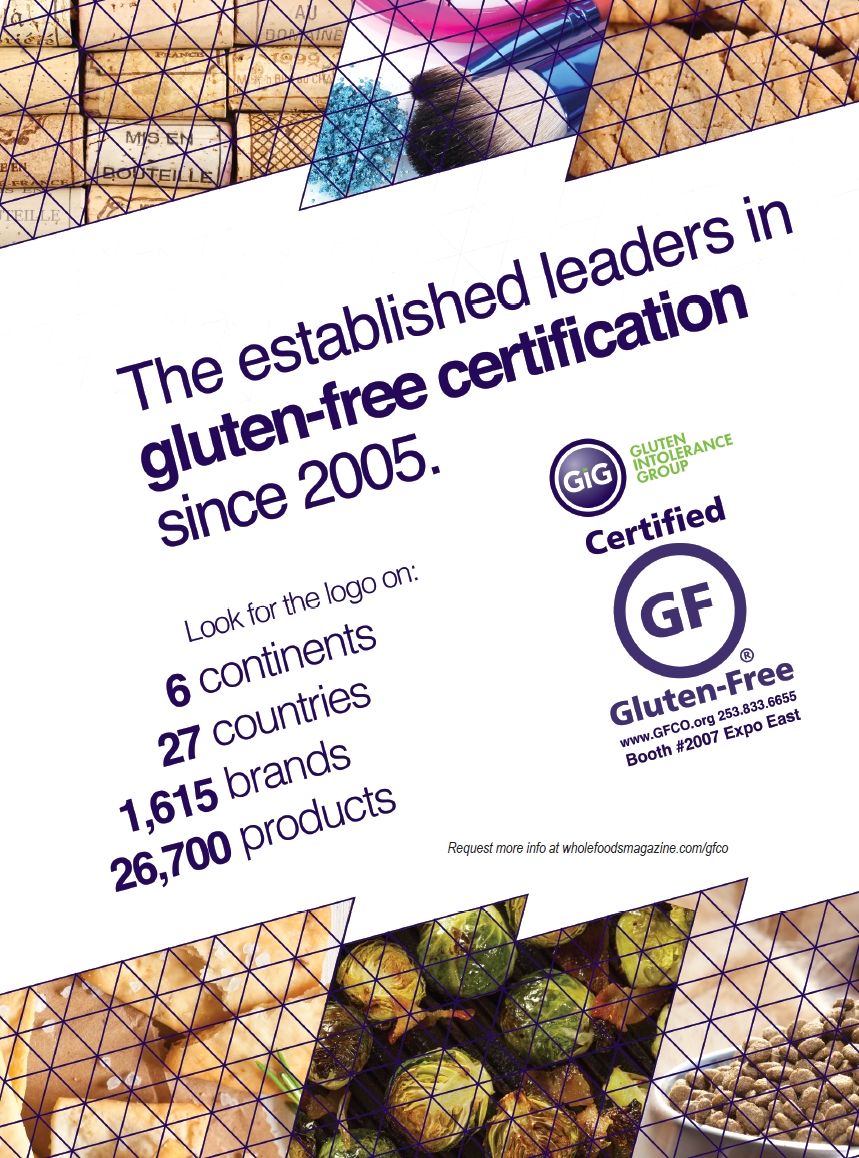 While companies are making great strides to pack their products with nutritional content that the entire consumer public can enjoy, Warady says, ultimately, “Just because a product is labeled free-from does not mean that it is healthy. That said, it also does not mean that it is unhealthy. It all depends on how the manufacturer chooses to produce its products.” Retailers should not only strive to have the most nutritious free-from products in their stores to entice consumers with or without sensitivities, but also be ready to answer questions about what types of nutrients and replacements go into said products to put customers’ minds at ease.
While companies are making great strides to pack their products with nutritional content that the entire consumer public can enjoy, Warady says, ultimately, “Just because a product is labeled free-from does not mean that it is healthy. That said, it also does not mean that it is unhealthy. It all depends on how the manufacturer chooses to produce its products.” Retailers should not only strive to have the most nutritious free-from products in their stores to entice consumers with or without sensitivities, but also be ready to answer questions about what types of nutrients and replacements go into said products to put customers’ minds at ease.
Back to Basics
The sheer volume of people without sensitivities being drawn to free-from foods makes them a major focus in any discussion of the category, but the original audience is still important. An estimated one in 133 Americans suffers from celiac disease, and approximately 65% of the total human population experiences some sort of reduced ability to digest lactose after infancy (3, 4). Michael Bracka, CEO of Freedom Foods North America Inc., Redlands, CA, adds that 130 million people in the U.S. today have to deal with multiple food allergies, what he describes as an “omnipresent” issue. He says that these factors are leading to an increase in the “need-based” consumer base as well as the “want-based” group. For the need-based consumer, it is not only essential that sensitive diet offerings be nutritious, but also be prepared as safely as possible, and many companies in the industry are constantly improving their standards to ensure consumer safety and confidence.
Taylor says that safety provisions should begin before the manufacturer even enters the picture, with  the supplier being subject to the same levels of scrutiny as the company that puts out the products. Rosenberg agrees, saying, “you have to vet your suppliers and know how the ingredients are handled, but test them for allergens anyway, before you use them, upon delivery.”
the supplier being subject to the same levels of scrutiny as the company that puts out the products. Rosenberg agrees, saying, “you have to vet your suppliers and know how the ingredients are handled, but test them for allergens anyway, before you use them, upon delivery.”
Robbins notes that the increased demand for sensitive diet foods has helped in this particular regard, saying that “it has become easier to source ingredients processed and packaged in dedicated allergen-free and gluten-free facilities.” When the supplier’s safety is confirmed, the next major step is making sure the manufacturing facility itself is free of any risk of cross-contamination. Dedicated allergen-free facilities are extremely important, particularly in the case of free-from foods. Depending on the degree of sensitivity, even the slightest trace of some allergens can be harmful for people.
With these base concerns handled, companies have come up with several different ways to help ensure safety and purity in products. Jennifer Ramstad, director of marketing for Pamela’s Products, Ukiah, CA, says that in addition to using a dedicated gluten-free facility, her company consistently tests its products at 5 ppm or less of gluten, despite the fact that FDA standards specify 20 ppm or less. Robbins says that in addition to internally testing ingredients and random finished batches of product, her company takes additional measures, requiring that staff members change into uniforms and shoes and only bring allergy-friendly foods into the facility for lunch. Warady also agrees on the importance of testing both inbound and outbound products, adding the utilization of third-party testing facilities for that extra layer of security.
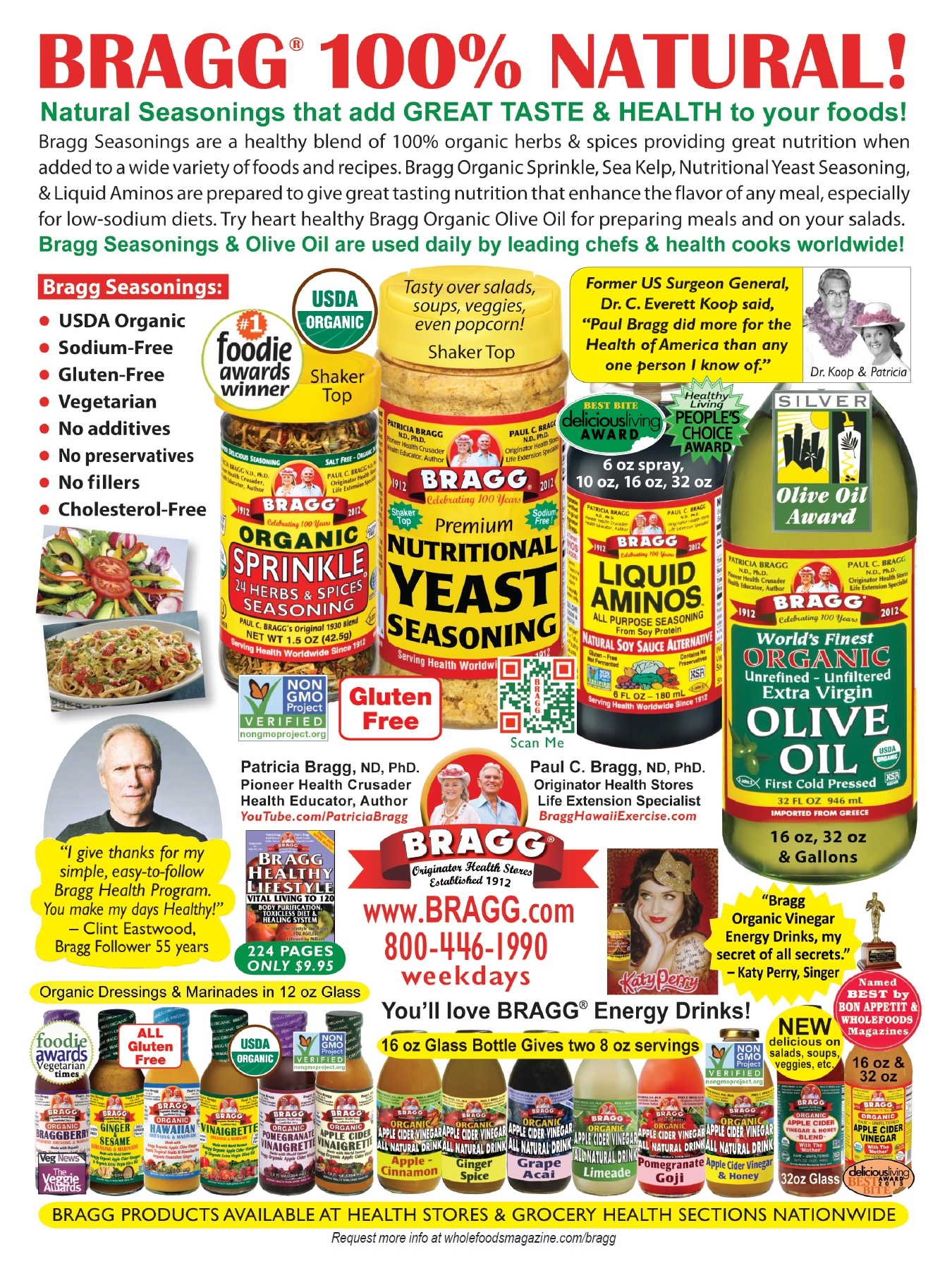 Along with a push for more safety measures comes a parallel initiative to make sure the public is aware that this dedication is taking place. “Companies are taking steps to become more and more transparent in communicating ingredients, sourcing, and country of origin and manufacturing processes in order to ensure a safe product for the consumer,” says Ullner, adding that third- party verifications like those offered by the Gluten-Free Certification Organization, as well as religious groups like The Union of Orthodox Jewish Congregations of America, are a good way to communicate extra safety and reliability.
Along with a push for more safety measures comes a parallel initiative to make sure the public is aware that this dedication is taking place. “Companies are taking steps to become more and more transparent in communicating ingredients, sourcing, and country of origin and manufacturing processes in order to ensure a safe product for the consumer,” says Ullner, adding that third- party verifications like those offered by the Gluten-Free Certification Organization, as well as religious groups like The Union of Orthodox Jewish Congregations of America, are a good way to communicate extra safety and reliability.
Where to Next?
The sensitive diets category and its sister free-from category both have grown from shaky origins to a proper market force. But as with any category that’s grown so much so quickly, a question is posed: where is there left to go? Is this destined for a sales plateau? The answer to this is two-fold, and on the products side of things at least, the answer is no.
One product area that Lynch says still has plenty of room to grow is plant-based proteins as people continue to look for healthier but still “swap-worthy” options in their food. Kaplan and Shulevitz add plant-based food colors and flavorings to the mix, saying that “they are not used widely enough throughout the food industry, nor are they used well enough.”
Rees also sees potential for egg replacers as people look for more egg-free options that “can also help 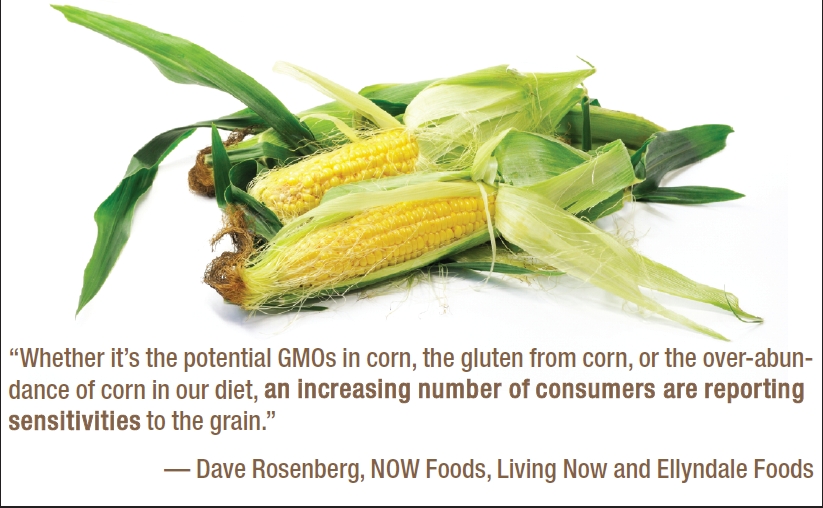 reduce the content of fat and cholesterol.” Other external factors may play into the popularity of egg-free in the future, like the recent egg shortage in the wake of avian flu in farm chickens.
reduce the content of fat and cholesterol.” Other external factors may play into the popularity of egg-free in the future, like the recent egg shortage in the wake of avian flu in farm chickens.
Rosenberg steers the conversation to oils, saying that “some commonly used oils, like vegetable oil or peanut oil, can cause severe reactions.” There are a wealth of options that may become more popular in the future, though, and he mentions avocado oil, coconut oil, rice bran oil, almond oil and macadamia oil as “nutritious and delicious” substitutes both for products and for consumers’ personal cooking.
Innovation in the category is coming from areas other than ingredients as well. One thing that Ullner predicts will increase in popularity due to rises in “the incidence of food allergies and diet-related health concerns” is customizable products. Her company offers a gluten-free baking mix that allows the customer to add their own sweetener. This could be particularly appealing for families who are trying to juggle multiple sensitivities. While the GMO issue has been front and center in the natural products industry for some time now, she also believes that “it’s just beginning to become a priority for mainstream consumers.” With this new interest driving further dialogue, food companies—especially those specializing in sensitive diets—will continue to make non-GMO a product priority.
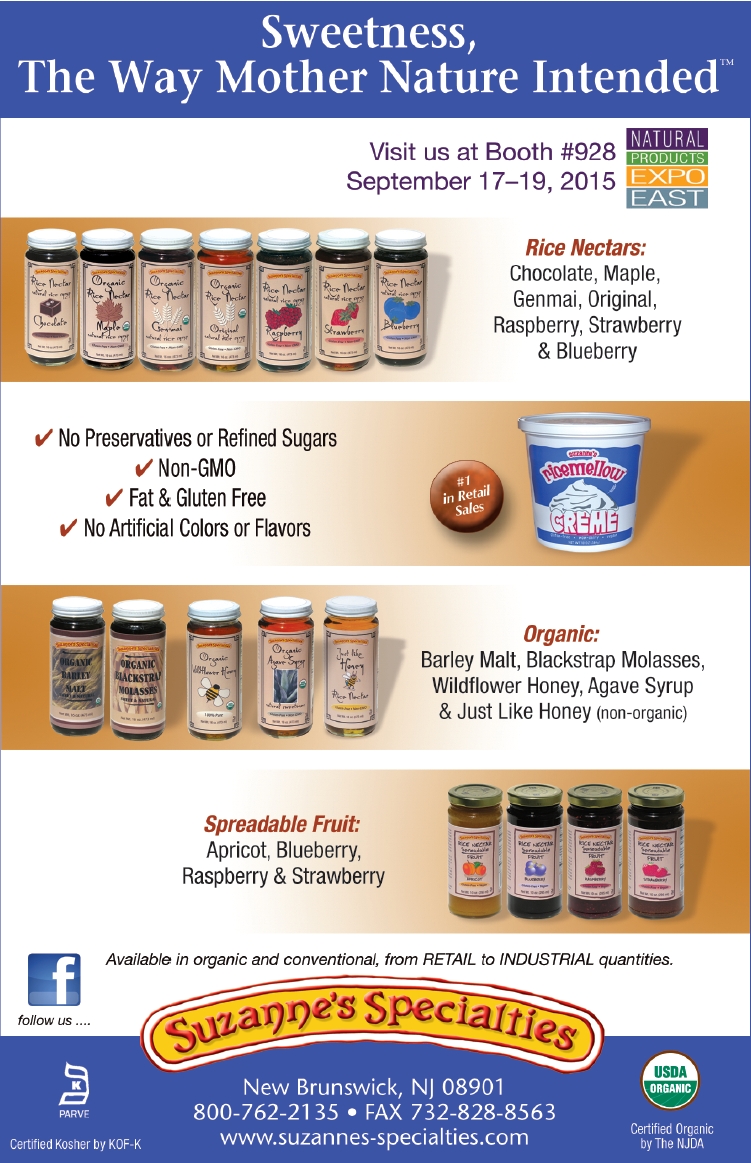 With new ingredients and product innovations, sensitive diet companies are doing their part to give the category legs moving forward, but what of consumer interest, the second part of this equation? One trend that Motew suspects will drive interest soon is corn-free foods. Rosenberg also supports the corn-free trend, noting that “Whether it’s the potential GMOs in corn, the gluten from corn, or the over-abundance of corn in our diet, an increasing number of consumers are reporting sensitivities to the grain.”
With new ingredients and product innovations, sensitive diet companies are doing their part to give the category legs moving forward, but what of consumer interest, the second part of this equation? One trend that Motew suspects will drive interest soon is corn-free foods. Rosenberg also supports the corn-free trend, noting that “Whether it’s the potential GMOs in corn, the gluten from corn, or the over-abundance of corn in our diet, an increasing number of consumers are reporting sensitivities to the grain.”
Robbins believes that nut-free and peanut-free are sections that will grow in the future. While they are among the top eight allergens that many free-from companies try to avoid, she says that awareness is still increasing. “As education increases, there are also more families without allergies seeking nut-free products for parties and group snacks in order to safely include those with allergies,” she says. Ramstad adds that the FDA has recently added coconut to its list of common allergens, “so we may be hearing more on coconut allergens in the future.” With the popularity of coconut in the natural products industry both in food and other areas, this trend could be particularly concerning.
Kaplan and Shulevitz say that in addition to dairy-free continuing to truck on forward, casein-free is emerging as a new category, both driven by “today’s ever-evolving consumer and their awareness of 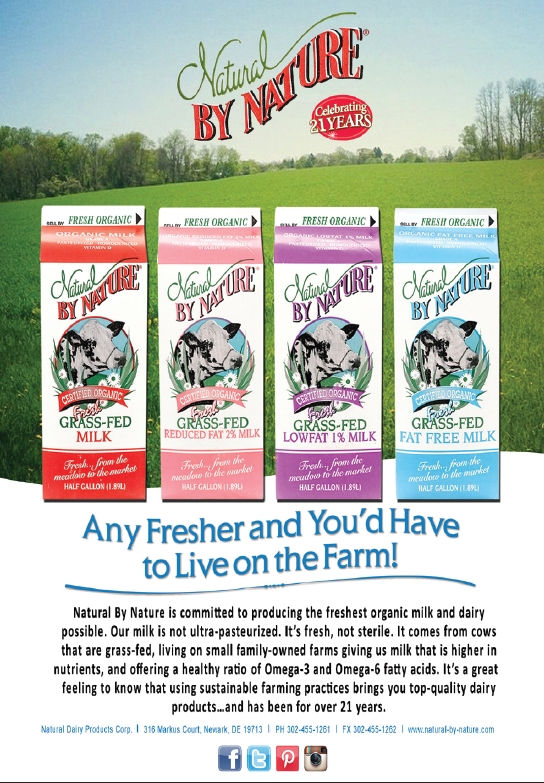 the foods they are feeding themselves and their families.”
the foods they are feeding themselves and their families.”
Soy-free is another area with great potential, according to Adams and Holley. While many companies look to soy when replacing meat, they say that “soybeans contain phytoestrogens, which may cause a testosterone imbalance in men and an estrogen dominance in women, neither of which are healthy for the body.” Consumers may flock away from ingredients they perceive as potentially harmful, but still “are searching for a better way to enjoy the foods they know and love.” This could pose a great opportunity for companies to utilize new ingredients that mimic the textures and flavors of meat.
Certain health conditions that don’t fall into the realm of food sensitivities will also provide opportunity, says Warady. He brings up eosinophilic esophagitis (EE), an inflammation of the esophagus that prohibits swallowing. EE “impacts 13 out of every 100,000 people in America, and the numbers continue to rise,” he adds. Another example is an increased demand for low-FODMAP foods to help deal with irritable bowel syndrome. “All of these conditions, which used to be fringe are now becoming mainstream, and food companies are the ideal source to help make the lives easier for people who suffer from the various conditions,” Warady concludes. Apaid reminds us that while celiac disease may be the main condition we think of when we think of gluten sensitivities, said sensitivities can occur in varying degrees. She mentions “gastrointestinal disorders and other serious complications resulting from being misdiagnosed” that removal of gluten from the diet has helped to alleviate. These non-disease sensitivities could also drive interest.
Even with the mainstream taking a large stake in gluten-free, there are still categories popping up. Deschenes cites a Mintel survey touting gluten-free toddler snacks as a growing area of interest. “Baby 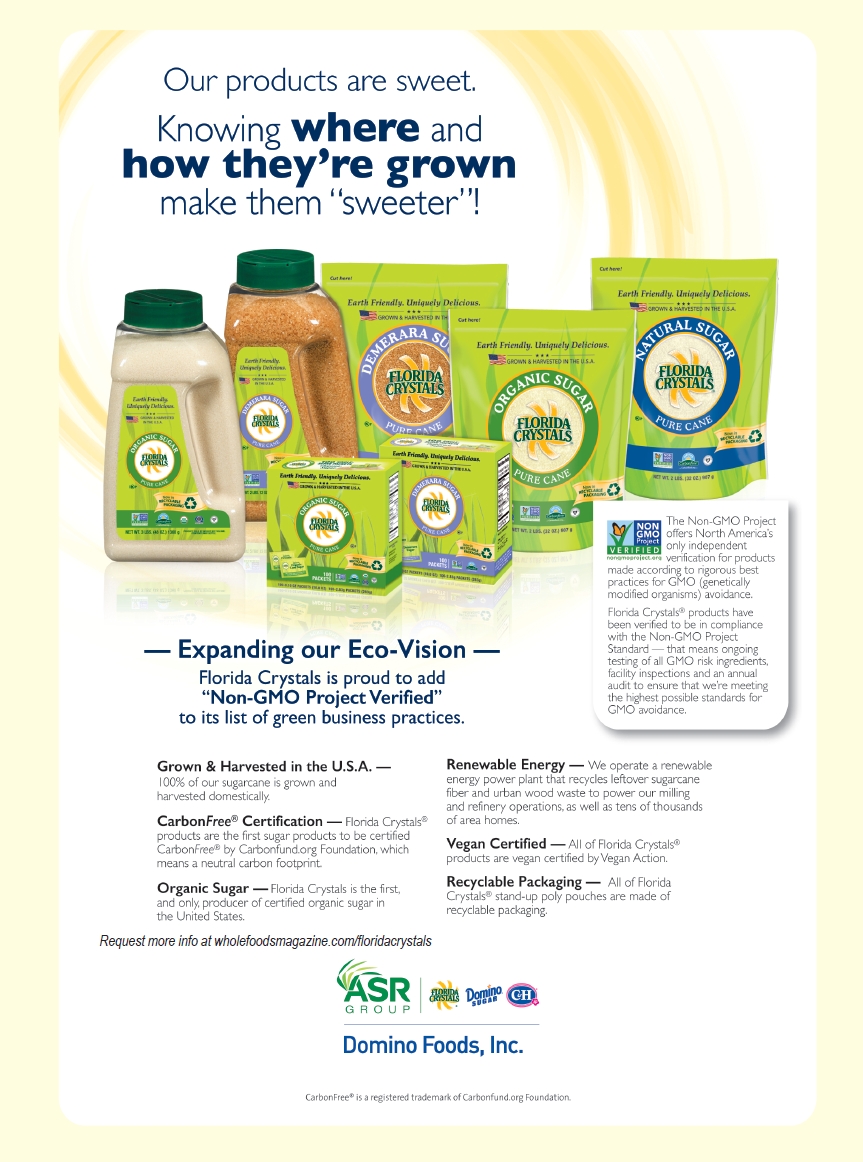 food companies have taught parents that gluten-free baby food is better for their babies,” he explains. “This mindset does not change as the child ages; thus many parents are now looking for gluten-free toddler snacks.” Even if the parents end up losing interest in gluten-free, the result is that “a significant amount of kids are growing up with gluten-free preferences,” he says. Bracka adds prebiotics to the list as well, believing that allergy-free foods with plant-based prebiotics can attend to dietary limitations, which “contribute to the development of good bacteria in the digestive system and aid in better digestive health.”
food companies have taught parents that gluten-free baby food is better for their babies,” he explains. “This mindset does not change as the child ages; thus many parents are now looking for gluten-free toddler snacks.” Even if the parents end up losing interest in gluten-free, the result is that “a significant amount of kids are growing up with gluten-free preferences,” he says. Bracka adds prebiotics to the list as well, believing that allergy-free foods with plant-based prebiotics can attend to dietary limitations, which “contribute to the development of good bacteria in the digestive system and aid in better digestive health.”
Ullner agrees that the demand for food for sensitive diets still stands to increase in the future, but takes a different perspective. “More than seeing any new categories on the horizon, I think the new reality for the future is that more consumers than not will actively manage one or more dietary restrictions,” she says. This could stem from increasing levels of food allergies and sensitivities, as well as families and friends who may not necessarily have any conditions, but are seeking out these types of products to be more inclusive when planning meals or events. Companies should perhaps consider adding versatility and customization to their sensitive diet products, to capture the attention of a consumer base juggling more and more dietary concerns. WF
References
1. WholeFoods Magazine, “NMI Webinar Reveals Gluten-Free Trends.” August 2015.
2. Packaged Facts, “Dairy and Dairy Alternative Beverage Trends in the U.S.” http://www.packagedfacts.com/Dairy-Alternative-Beverage-8945813/, accessed 7/13/2015.
3. National Foundation for Celiac Awareness, “Celiac Disease: Fast Facts.” http://www.celiaccentral.org/celiac-disease/facts-and-figures/, accessed 7/14/2015.
4. U.S. National Library of Medicine, Genetics Home Reference: “Lactose Intolerance.” http://ghr.nlm.nih.gov/condition/lactose-intolerance, accessed 7/14/2015.
Published in WholeFoods Magazine, September 2015









